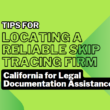The dilemma of data interoperability in education must be addressed immediately. The data ecosystems should be optimized to enhance educational processes and advance students’ learning and growth. For educators to make data-driven decisions, they must have access to high-quality, meaningful data.
What is edfi data standard, this is to provide unified access to data; educational data systems must break down old silos and efficiently interconnect. Without such solutions, educators must physically put the puzzle pieces together themselves or are completely cut off from the information they need.
Academic institutions are increasingly implementing the Ed-fi education solution to fulfill the demand for data interoperability. Data interoperability is a seamless, secured, and controlled data transmission between applications implementing data standards.
It enables school districts to bring together siloed data pieces to accelerate the decision-making and learning processes by facilitating the interchange of information in real-time or nearly real-time. As a result, it gives administrators and educators the chance to position themselves as better school leaders by making the best possible use of data.
The data lifecycle management is streamlined by the Ed-fi data standard’s rules. The adaptability of the data standard is emphasized to allow other agencies to include new entities, affiliations, and properties.
A single standard cannot adequately capture diversity because of numerous data obligations. The Ed-Fi solution thus allows the previously disconnected educational products to connect and efficiently come together to generate data insights and empower the stakeholders. It enables them to take advantage of the data that schools constantly gather.
Open-source:
A free and open-source data standard is the Ed-fi solution. The technology was created with the community of educators and related professionals. It offers a range of open-source technologies, such as:
To consolidate data from district applications, use a persistent ODS.
- Users can combine data from various sources into one database using the Operational Data Store (ODS).
- A complete data model for education
- An API that enables data to go both ways.
- Applications can produce, read, and change data thanks to the API.
Since it is open-source, no licensing charge is needed to include the solution into the infrastructure of educational software.
Schools can use that extra money to fund the expansion of other fields.
Ed-Fi Data Standard components:
UDM model: The foundation of the Ed-Fi data standard is a Unifying Data Model (UDM). The UDM is open-source and associated with CEDS. It aids in the interchange, sharing, and analysis of education data and describes the numerous entities in the standard. UML is used to express the UDM. The model aids in coordinating data and the information model across Ed-Fi technology.
Data Exchange Framework for XML: The framework is defined in files called XML Schema Definitions (XSD). It makes it possible for the source systems to exchange student data quickly. It is possible to populate an Ed-Fi ODS / API with XML.
Design guidelines for REST APIs: It outlines the standards for an Ed-Fi REST API’s design. With the Ed-Fi REST API’s aid, the UDM determines the data transport and modification protocols.
Ed-fi Data Standard use cases:
The following data can be managed, arranged, and exchanged with the use of the Ed-fi data standard:
- Academic Standards, Student Assessments, And Assessment Results
- Information And Hierarchy Of Educational Organizations
- Information On The Schedule And Calendar
- Grade Book Entries And Student Grades
- Attendance Data For Students And Teachers
- Incidents Of Student Discipline And Responses
- Information About Student Enrolment And Class Assignments
- Data On Student Transcripts
- Contact Details For Parents And The Connections Between Parents And Students
Ed-fi data standard advantages:
- Schools can standardize their data systems with the help of the Ed-fi data standard, allowing them to “speak the same language.”
- Stakeholders can streamline the laborious process of collecting and storing student data.
- It aids in the data’s unlocking from many platforms’ systems.
- It enables the stakeholders to combine data to present a complete picture of the student.
- The data standard allows school administrators to take advantage of important insights and make data-driven decisions.
- The extensive real-time data support learner-centered instruction.
- A vibrant community of technologists and educators works to advance Ed-fi daily. As a result, it adheres consistently to the latest trends.
- The information that is gathered, saved, and transmitted is encrypted. Therefore, it is shielded from cyber threats.
To Sum Up:
The Ed-fi concept makes use of a secure, monitored data transfer. It is here to radicalize and maximize education data, explain interoperability standards to participants across the education sector, and use it to support student’s growth and development.









